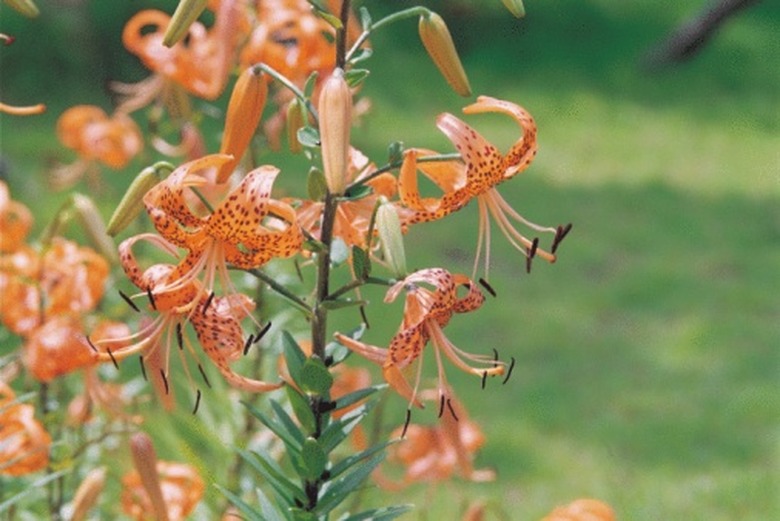Can You Grow A Lily Plant By Just Breaking It Off Of The Stem?
Perennial gardeners who master bulb division and growing lilies from seed may want to try another form of vegetative propagation, stem cuttings. Although this method of propagation is more difficult for herbaceous perennials such as true lilies that grow from bulbs than it is for woody perennials, stem cuttings guarantee an identical clone of the parent plants. Some types of lilies lend themselves more readily to the technique.
How Lilies Reproduce
How Lilies Reproduce
Lilies grow from scaled bulbs that carry the genetic code of the plant and the embryo and food and moisture to keep it safe until conditions allow it to grow again. Bulbs multiply rapidly. Some varieties produce additional bloom-ready bulbs every year. Some bulbs grow little bulblets around the base, or growth plate, of the parent bulbs and the section of the stem between the bulb and soil line. Some lilies, notably the North American native tiger lily, grow tiny bulbils at the junction of the leaf and stem. Each scale of the lily's bulb, every bulblet and bulbil carry the exact chromosomal combination of the parent. Seeds, produced in pods formed on flower stems, carry the combined genetic code for a new plant — a hybrid — with the combined chromosomal structure of the seed-bearing parent and whatever lily provided pollen. Success with stem cuttings relies on how the cultivar self-reproduces and how the stem cutting is planted.
Timing
Timing
Lily stems begin dying back quickly after flowers fade, so cuttings must be taken soon after the last flowers drop. Cuttings must be planted immediately in sharp sand or a starting mix and kept moist. When a shoot emerges, a bulbil has formed in the axil where the leaf meets the stem. This tiny bulb, planted in a nursery plot in spring, should grow large enough to move to the garden within a year or two. If the stem cutting successfully creates a bulbil, it may grow large enough to produce flowers within two to four seasons, depending on the lily cultivar.
Method
Method
Section green, live sections of the stem, keeping at least one leaf on each section. Dust the section with a fungicide or rooting hormone, available at garden centers, and plant sections in a flat of sharp sand or soilless starter mix so that the leaves stand up above each section. Be sure to bury the axil of each leaf. That is where the bulbil will form.
Choosing Lilies for Cuttings
Choosing Lilies for Cuttings
Many species of lilies, such as tiger lilies, readily form bulbils in leaf axils; hybrid Asiatics form bulblets on stems underground and leaves torn off with a section of stem. Lilies will not grow directly from stem cuttings; they must first form bulbils, so be patient. Only the lilies that grow bulbils — or those hybrids whose ancestors grew bulbils — will respond to this method of vegetative reproduction. The rest provide plenty of bulblets for the picking and planting on their mother bulbs' growth plates or along the underground sections of their stems.
